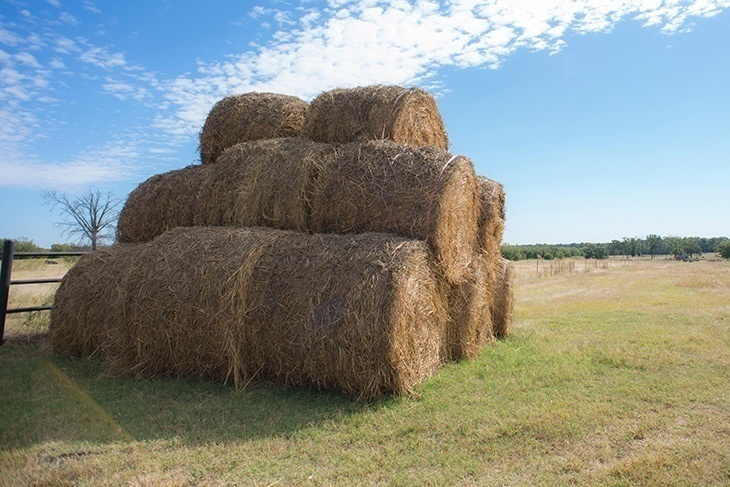
It is not unusual for cattle producers to have favorite hay feeding areas for their livestock, but it is important not to automatically default to locations that may be selected based primarily on convenient access.
“Continuing to feed hay in the same place, time after time and year after year, can lead to the concentration of a lot of nutrients from the hay and from animal manure and urine, all in a very small area,” said Paul Beck, Oklahoma State University Cooperative Extension beef cattle specialist and holder of the university’s Dennis and Marta White Endowed Chair in Animal Science.
Research trials indicate there can be 10 to 20 times more phosphorus, potassium and organic matter in those types of hay feeding areas than in the surrounding pasture.
Beck recommends rotating hay feeding areas and unrolling hay across a pasture throughout the winter months, spreading out those nutrients.
“Consider the average bermudagrass bale, which is about 8 percent crude protein with 1.3 percent nitrogen, 1.3 percent potassium and about 0.2 percent phosphorus, the equivalent of about 100 pounds of triple 17 fertilizer per round bale,” he said. “That works out to about $30 worth of fertilizer in trying to replace lost nutrients.”
In addition, concentrated hay feeding sites can negatively affect hygiene in those areas during calving, leading to instances of scours and navel ill in calves.
“Cows like to calve and then bring their calves to their favorite hay feeding site,” Beck said. “Also, research has shown rolling out hay every day can decrease hay waste from about 50 percent down to 25 percent.”
Producers can place a hay bale on a steep hill and roll it down. Some cattle operators push the bale with four-wheelers, others employ a tractor.
“There are many ways to unroll hay,” Beck said. “Use your imagination. Have some fun while being productive and practicing good management.”
Oklahoma is the nation’s fourth-leading producer of cattle and calves, according to USDA National Agricultural Statistics Service data.
The Oklahoma Cooperative Extension Service is one of two state agencies administered by OSU’s Division of Agricultural Sciences and Natural Resources, and is a key part of the university’s state and federally mandated teaching, research and Extension land-grant mission.
Source: Oklahoma State University DASNR
